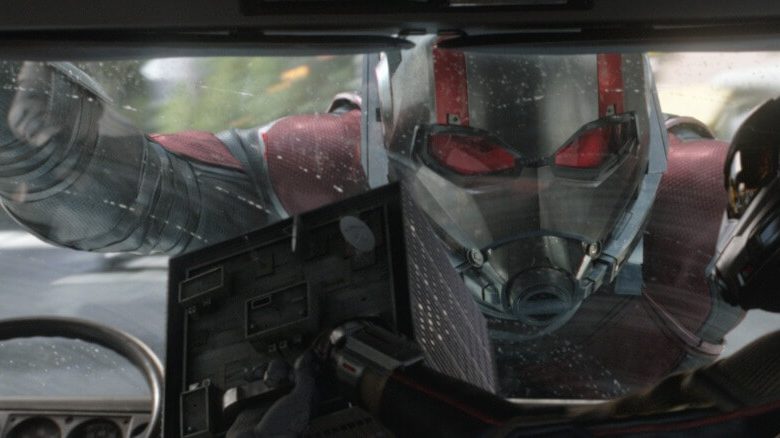Twitter Reveals Intersectionality’s Problem with Facts

There were many things I learned as an English major in college, like how understanding something properly is actually hard work.
Take Winnie the Pooh, for example.
Did you know that Winnie the Pooh is pro-Marxism, pro-Christian and anti-feminist? That it’s a medical metaphor for health issues and mental illness, a dissertation on the purposelessness of the ideal life and a pledge to further the cause for self-interest?
Want more? It’s a treatise on deconstructionism and postmodernism. Pooh puts forth the idea of neo-naturalism, a flagship of children’s literary idealism and a fable warning of abusive relationships?
Well, maybe not.
But if you read “The Pooh Perplex” and “Postmodern Pooh,” you’d find examples of literary essays arguing these very topics (Watch for the satire—some of it is very subtle.) You can also Google the matching memes.
Understanding—processing words, images, etc., to form and derive and interpret proper meaning—is hard. There are eight steps of communication, several levels of rhetoric, semantics, semiotics, context, authorship and much more to consider. The process to become a thoughtful critic requires self-awareness and nuance without trending toward bias.
Obviously, Twitter doesn’t have time for that.
When Intersectionality and Social Media Collide
We live in a culture that often rewards and incentives outrage, foolishness, performance, popularity, and intersectionality over truth and honest criticism, leading me to the second thing my English degree taught me: You can say anything you want to be true, as long as you rationalize it with a compelling argument.
Often times, the masses are looking for a simple, cohesive argument—perspective, narrative, etc., usually one that brings a sense of personal power or confirmation—instead of the messy truth.
Which brings me to this Tweet:
It took me a few days to realize this but #AntManAndTheWasp is a movie about a damsel in distress. THE ENTIRE MAIN PLOT IS ABOUT SAVING A DAMSEL IN DISTRESS!
— Anita Sarkeesian (@anitasarkeesian) July 10, 2018
Ms. Sarkeesian’s take on the new “Ant-Man and the Wasp” film is that it is a movie focusing on a damsel in distress, and therefore, it is to be … condemned? Ridiculed? Forgotten? The subject of feminist horror, and thus to be shunned and avoided?
In the spirit of honest criticism, let’s take a look at the evidence.
(Warning: light spoilers)
In the film, Dr. Hank Pym (Michael Douglas), a scientist who was the original Ant-Man, is out to save his long-lost wife, Janet van Dyne (Michelle Pfeiffer). With the help of his daughter, Hope van Dyne (Evangeline Lilly), and the new Ant-Man (Paul Rudd), they work to find a way to bring his wife back from the quantum realm.
In that sense, Ms. Sarkeesian is correct. “Ant-Man and the Wasp” is a “damsel in distress” yarn where a man is determined to set out a woman, in particular a woman he loves. It serves as the main plot point of a movie, a raison d’etre or McGuffin, if you will.
But this is the only technically correct point she makes in her quest for intersectionality.
First, Janet van Dyne is not a damsel in the sense that she is helpless. She is an accomplished fighter and Ant-Man soldier herself. In the first Ant-Man movie, we learn that she went subatomic in order to stop a missile from hitting the United States and starting another world war. She is a fallen hero.
RELATED: How Woke Culture Is Killing Comedy
Second, Dr. Pym is not alone in his quest to save her. The Wasp and Ant Man are both willing to risk their lives to rescue her. This is not a movie about only a man setting out to save his love; it is about a family working to reunite, with friends coming to their aid.
Third, is there something wrong with a superhero film where a hero sets out to save a woman? (When the world needs to be saved, that includes the 50 percent of people who are women.) That’s part of the genre when the hero saves someone.
In this case, it just happens to be a woman.
The ‘Yeah, But Still… Line of Reasoning
You might be able to argue anything, as long as you rationalize it with a compelling argument. But in the end, truth still wins out.
Ms. Sarkeesian’s overall assessment of the film is unaware at best, intellectually dishonest at worst, and misleading for sure. This feminist critique, critical of the “damsel in distress” label inappropriately attributed to van Dyne, denies an audience to the complex and empowered female roles of Hope’s Wasp and Ava Starr, the Ghost.
It also dismisses any positive contributions to the leading male roles on the basis of their gender. It does not consider the full spectrum of feminism itself. Feminism is meaningless to women if women are not allowed to fail, if femininity is not intrinsically valued, and if women are forced into pre-chosen roles (even if those pre-chosen roles are feminist-approved).
(For more examples of feminism’s abuses on Twitter, please check out my friend Faith Moore’s articles on PJMedia.)
I agree that women should be strong, smart and heroic. They should be able to take care of themselves no matter what. It’s good to see positive role models in the movies and media. But having a good man love you enough to rescue you, to provide for you, to care for you, to ultimately help you through life and all of its trials and tribulations—that’s nothing to fear or denigrate as “anti-feminist.”
Once more, intersectionality robs the richness of our culture rather than contributes to it.
C. S. Johnson is the author of several young adult novels in a variety of genres including fantasy, science fiction, and historical fiction. Her latest spy adventure, “Kingdom of Ash and Soot (Book 1),” is now available. With a gift for sarcasm and an apologetic heart, she currently lives in Atlanta with her family. Find out more at Johnson’s official Web site.
